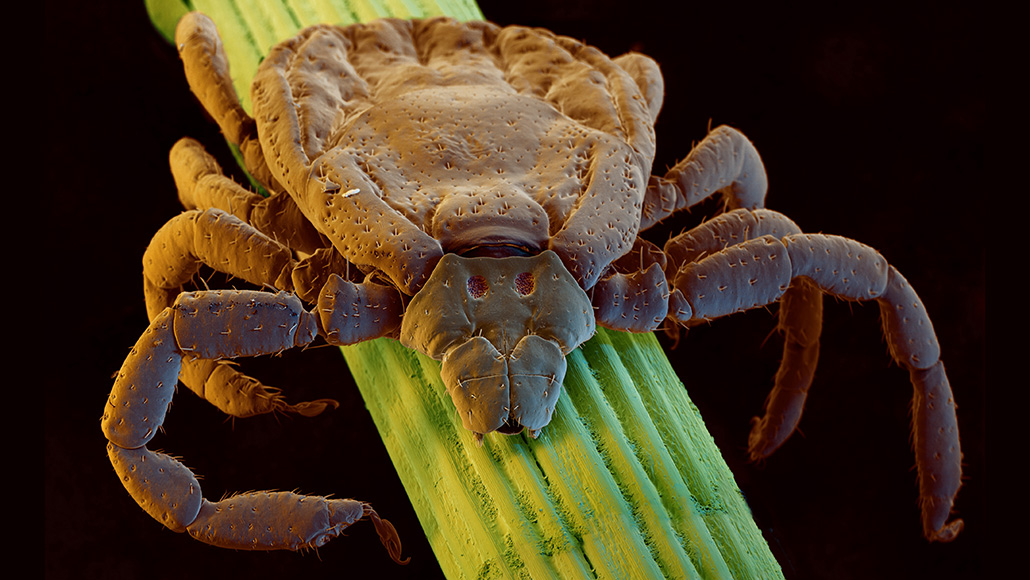
The bacteria that cause the deadly Rocky Mountain spotted fever can be transmitted to humans by bites from brown dog ticks (one shown).
Eye of Science/Science Source
Climate change could turn some dog ticks into suckers for humans instead of canines.